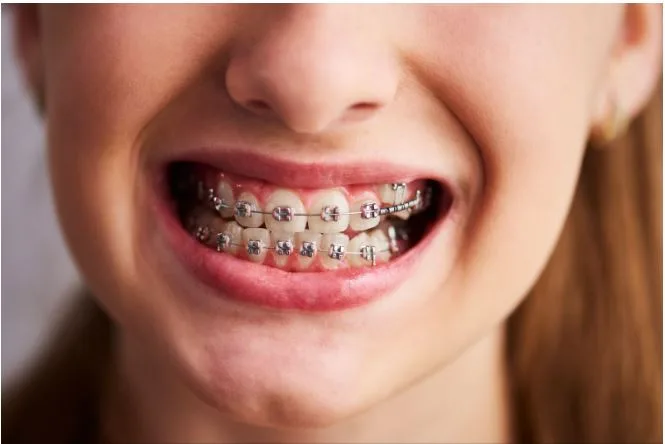The Evolution of Traditional Braces: What’s New in 2025
Decades of evidence have proven braces to be the backbone of orthodontic dental treatments, and they still work today to straighten teeth and make smiles look better everywhere. Technology in the year 2025 will further tip the orthodontic terrain in favor of traditional braces and will contribute to traditional braces being more efficient, comfortable, and personalized than before.
In looking into the past of traditional braces, what they have evolved into, what improvements have been introduced in the year 2025, the added benefits of these advancements on the patient, and the reason that braces can still be a favorite choice even with the advent of alternatives, all have been studied in this article.
A Quick Look Back: Traditional Braces Then vs. Now
Conventional braces in NYC and around the world have a rich history, dating back to the early 20th century when metal wires and bands were first used to straighten teeth. Traditional braces for children have a long history; they appeared early in the 20th century. They have changed radically over time:
- Early 20th century: The first methods of straightening teeth using metal wires and bands were not comfortable or aesthetic, as they were large; the bands were very cumbersome to wear.
- 1970s: Gold and silver were abandoned in favor of stainless steel brackets, which made braces more powerful and less expensive, but were still extremely large and easily noticeable.
- 2000s: Less intrusive and more aesthetic treatments were provided because of miniaturized brackets and tooth colored ceramic braces. Even the self-ligating braces came out and now, save both friction and, in some cases, the duration of treatment.
- 2010s: Digital dentistry was starting to pervade orthodontics, and 3D imaging and computer-aided design were improving the precision, efficiency, and transparency in orthodontics by enhancing bonding.
- Today (2025): Modern braces are an evolution of these previous technologies, and are smaller, more intelligent, and more customisable than ever.
What’s New in 2025: Key Innovations
In 2025, more traditional braces are upgraded with the addition of digital technology and materials science, and the results are several exciting updates. These are some of the most interesting innovations:
1. Intelligent Elastic Brackets with the Sensors Inside
Smart brackets are some of the greatest innovations. Such small devices, placed with sensors, can track the movement of teeth in real-time. The information is sent to orthodontists, such as Smiles + Grins, so that they can monitor the improvement remotely and adjust it with more accuracy.
2. Heat-Activated and Memory Wires
Although wires that boast of shape-memory have long existed, the 2025 models are even more sophisticated. They automatically adjust to the needs of the patient, shortening treatment time and lessening the aggravation of adjustments.
3. Custom Brackets 3D Printed
Contemporary orthodontic treatment trends are all about personalization. It is now possible to design braces with the 3D printing method in the shape of each of the teeth. The use of custom brackets not only enhances the comfort factor but also enhances the efficiency of the treatment process in that it helps put pressure in areas where it is required most.
4. AI-Powered Treatment Planning
Advanced computer programs can process data about a patient to get the most accurate movement of teeth. Orthodontists are now able to devise specific and best treatment plans that not only maximize results but, in some cases, shorten the total treatment time by a few months.
5. Sustainable Materials
Orthodontics is not left out as the world focuses on sustainability nowadays. Brackets and wires are being made using recyclable or biodegradable materials to help cut down on waste, and are still functional.
Enhanced Patient Experience
The traditional braces of 2025 will involve more than just moving teeth; they will focus on making the overall patient experience a better one. This is how patients can be relieved by the modern advances:
Greater Comfort
And the brackets of today are less than ever troublesome, more comfortable, and less bulky. Included with heat-activated wires to limit painful tightening appointments, patients experience significantly less discomfort when compared with traditional braces.
Fewer Office Visits
Intellectual brackets and remote surveillance have largely decreased the possibility of face-to-face meetings. Most patients may slip in only after 8 to 10 weeks, as opposed to 4 to 6 weeks, of seeing their orthodontist.
Improved Aesthetics
53% of people compare their smiles to others on social media. Ceramic and clear braces remain the discreet solutions to the metal braces. With the evolution of stain-resistant material, patients do not have to be finicky about discoloration anymore.
Faster Results
The use of AI-enabled treatment planning, together with specially designed wires and brackets, has reduced treatment duration. With current methods, many patients are showing results faster, hence within a matter of months, than with the older methods.
Software Support and Applications
Orthodontic studies have become common as orthodontic practices now more commonly offer mobile applications that connect to smart brackets. These applications remind patients to have good oral hygiene, monitor how treatment is progressing, and even send an alert when a wire comes loose.
Why Patients Still Choose Traditional Braces
Although clear aligners have become quite popular, many patients are still willing to apply traditional braces, and rightfully so:
- Severe cases effectiveness
- Treatment without compliance
- Cost-effective
- Decades of proven results
- Customisation and personalisation
Final Thoughts
The history of conventional braces is a fascinating tale of remarkable development. Instead of bulk wires and brackets, there are now slim, shiny, and very efficient systems available in the future in 2025, proving how orthodontic science has evolved. The introduction of orthodontic treatment trends such as smart brackets, AI-based treatment planning, and 3D printed customization has provided patients with new experiences of faster, more comfortable, and more personal treatment.






